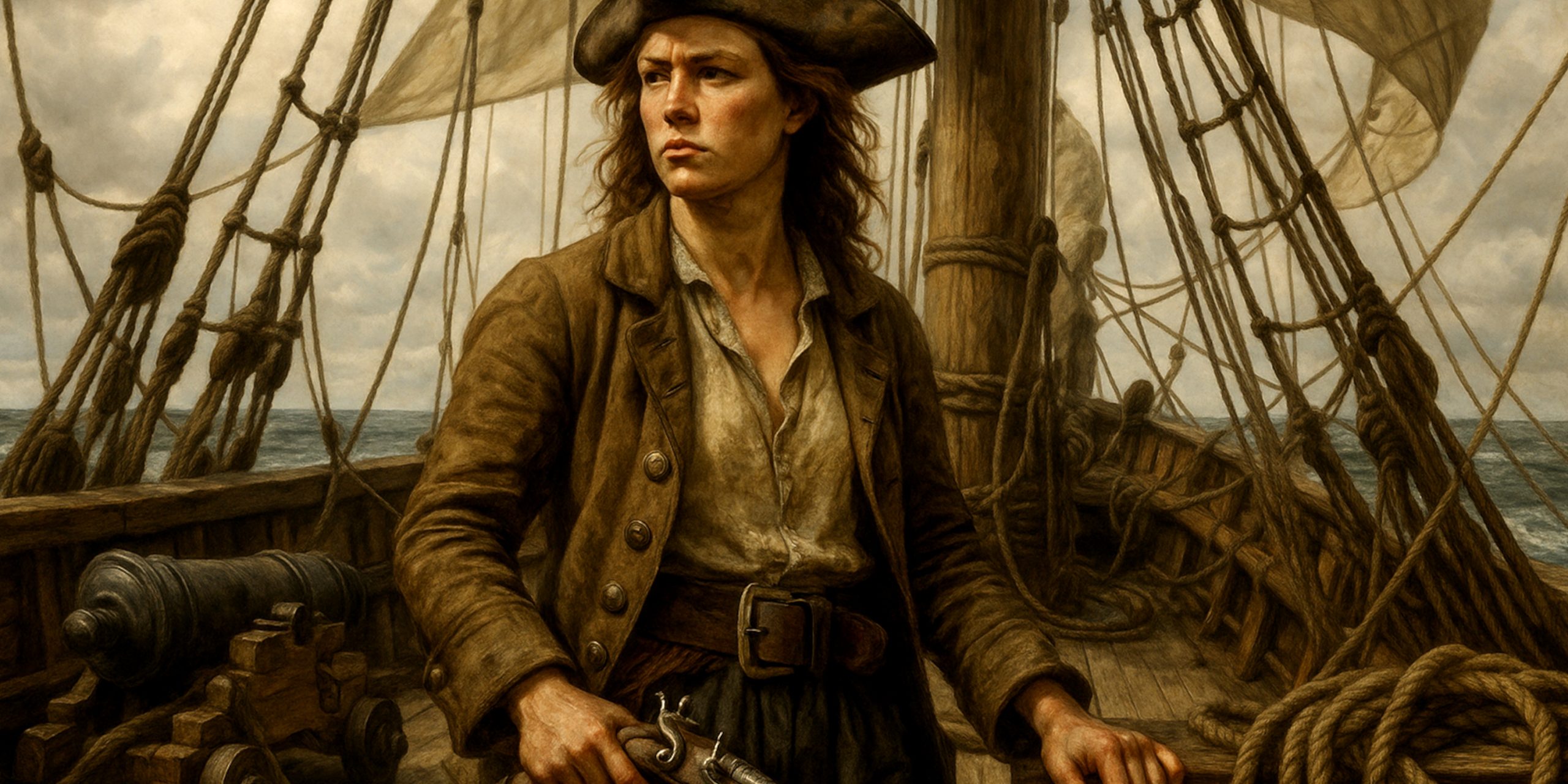
Mary Read is one of the most famous female pirates of the early 18th century. Alongside Anne Bonny, she challenged expectations aboard the sloop Revenge in the Caribbean during the so-called Golden Age of Piracy. Her life, as recounted by contemporaries and later chroniclers, blends verifiable history with fragments of legend. While some facts remain elusive, the core of her story is built on contemporary testimonies, court records, and accounts from her peers.
Early Life and Disguise
Mary Read was born in England around 1685, possibly in Devon. According to A General History of the Pyrates (1724), attributed to Captain Charles Johnson, her mother disguised her as a boy to continue receiving financial support from her deceased husband’s mother. This early cross-dressing set a precedent for Mary’s later roles in both military and maritime life.
She served as a footboy and then joined the British military during the War of the Spanish Succession, still presenting as male. There, she reportedly fell in love with a fellow soldier, revealed her identity, and married him. After her husband’s death, she returned to a life of drifting, eventually boarding a ship bound for the West Indies.
Turn to Piracy
Mary’s ship was captured by pirates, and rather than resist, she joined them. In 1718 or 1719, she fell in with the notorious pirate Calico Jack Rackham. It was aboard his sloop that she met Anne Bonny, another female pirate in disguise.
The pair quickly gained a reputation for their ferocity in battle. Unlike many male pirates who were often drunk or hesitant, Read and Bonny reportedly fought with clear-headed aggression.
A captured merchant seaman described the scene during a skirmish:
“None stood out in defence of the sloop save two women, and they swore and fought like any man ever I saw.”
— Testimony from the trial of Rackham’s crew, 1720
Weapons and Combat
Mary Read was said to fight with both cutlass and pistol, often carrying multiple firearms like other Caribbean pirates of the period. She reportedly used two pistols strapped to her chest, along with a hanger (a short naval sword) at her side.
Eyewitnesses during her capture claimed she fought in trousers, loose shirt, and headscarf like any male pirate, which allowed her full movement during boarding actions. She killed at least one pirate in a duel after he refused to obey orders.
Ships and Pirate Life
Read sailed with Calico Jack aboard the Revenge, a small but swift sloop armed with about 12 small cannon and crewed by 15 to 20 men and women. Though not a major ship of the line, Revenge was agile enough for hit-and-run raids on merchant vessels near the Bahamas and Jamaica.
While details of every engagement are sparse, court documents and depositions confirm that Read took part in at least several raids, including attacks on Spanish shipping and English colonial merchants. The crew shared plunder equally, with shares assigned regardless of gender.
Bounty and Treasure
There is no confirmed list of treasure attributed directly to Mary Read, but records show that Rackham’s crew took multiple prizes in 1719 and 1720, mainly cargo ships laden with sugar, rum, and cloth. The total estimated value of their takings before capture was several thousand pounds, though most was quickly spent or squandered in taverns and brothels in Nassau and along the Spanish Main.
Governor Woodes Rogers had issued bounties for known pirates in 1718. While Read was not mentioned by name, any captured member of Rackham’s crew was eligible for execution.
Capture and Trial
On 22 October 1720, Captain Jonathan Barnet attacked the Revenge off the coast of Jamaica. Rackham and most of the crew were reportedly drunk below deck. Only Read and Bonny resisted, firing pistols and calling on the men to fight.
All were eventually captured. The trial took place in Spanish Town, Jamaica. Read and Bonny both revealed their gender, stunning the court. Their identities were confirmed, and they were sentenced to hang alongside Rackham. However, both women “pleaded the belly” — claiming they were pregnant.
The court stayed their executions.
Fate
Mary Read died in prison in April 1721, most likely of fever or complications related to childbirth. Her burial is recorded in Jamaican church records as:
“Mary Read, pirate, buried 28th April 1721.”
There is no evidence she was ever executed. No known child of hers survived, and her grave has never been conclusively located.
Legacy and Contemporary Commentary
Mary Read remains a figure of fascination in pirate history, not just for her gender but for her bravery and military competence. As Captain Charles Johnson noted in his 1724 account:
“She was a robust and spirited woman, capable of the hardship and boldness that few men dare.”
Her partnership with Anne Bonny has become the subject of historical fiction, theatre, and popular culture, often with embellishment. Still, the facts available show a woman who made deliberate choices in defiance of 18th-century norms, surviving as long as she could in a brutal, short-lived world.
Where to See Artifacts
While no personal items from Mary Read are known to survive, pirate-era artefacts are on display at:
- Museum of Jamaica, Kingston – displays on piracy in the Caribbean.
- National Maritime Museum, Greenwich – exhibits on piracy and privateering.
- Fort Charles, Port Royal – interpretation panels on Rackham’s trial.
The Seven Swords takeaway
Mary Read’s story is a record of how someone on the margins of society carved out a role with sword in hand, even when the odds were stacked against her. Despite the myths, enough truth remains in her court records, testimonies, and the fear she instilled to place her firmly among the most recognisable pirates of her time.
Watch the documentary:



